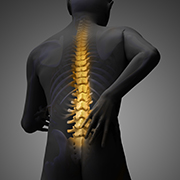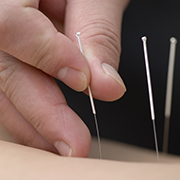Frequently Asked Questions (FAQs)
Henderson Chiropractic Center
1. What Is Chiropractic?
Chiropractic is safe and effective treatment for many types of neuromusculoskeletal (relating to the nerves, muscles and joints) and other conditions. It is based on the scientific fact that your body is under the control of your brain and nervous system. When spinal or extremity joints become restricted, your nerves become irritated, causing pain and other health problems. Chiropractic involves the science of detecting these abnormal joint restrictions (or subluxations), and restoring proper joint motion and neurologic functioning through manipulation or the adjustment. In our practice, we assess and treat many other contributing factors of your problem, including the muscles and other soft tissues , as well as your lifestyle, diet/nutrition, exercise, ergonomics, and posture. Since chiropractic physicians also receive extensive diagnostic training, we can help you to decide if you would be likely to benefit from chiropractic care, or if you should consult a medical doctor or another health care provider.
2. What Causes Joint Restrictions or Subluxations?
Unfortunately, so many factors of modern living can cause joint and muscle overload, and make your body “stress out.” Some common causes include stress, poor posture, repetitive motions, prolonged postures such as sitting and standing without breaks, improper sleep habits, improper lifting, lack of exercise, poor nutrition, inadequate rest, and poor form during exercise and at the gym.
3. What Is an Adjustment?
A chiropractic adjustment, or spinal manipulation, is a procedure in which a specific force is applied at a precise location and direction to a joint that is restricted, or not moving properly. The purpose is to restore normal joint motion, which often results in decreased pain through improved spinal function, improved nervous system function, and improved health. Dr. Taylor and Dr. McHale are highly skilled in several different adjusting techniques, and will select the one most appropriate for your condition, in order to provide gentle, safe, and effective results.
4. What Type Of Education Do Chiropractic Physicians Receive?
Government inquiries have affirmed that today’s chiropractic academic training is of equivalent standard to medical training in all preclinical subjects. Chiropractic education includes special emphasis on anatomy, physiology, neurology, orthopedics, pathology, biomechanics, radiology, nutrition, and spinal manipulation. Four years of postgraduate study and completion of an internship are required, followed by National and State Board examinations, before entering practice. Continuing postdoctoral education is also required to maintain current licensure and keep abreast of the current scientific literature.
5. How Long Will I Need Chiropractic Care?
Several factors are considered when determining your treatment plan, including the results of your examination, when your symptoms began, your daily activities, and your level of stress. Every case is different, but most patients begin to respond favorably within the initial weeks of care. Once pain relief is obtained, many patients choose to continue with periodic visits, to maintain the results they’ve achieved. By emphasizing patient education, you become as self-reliant as possible. How long you decide to continue to benefit from chiropractic care is ultimately up to you.
6. How Much Does It Cost?
Our chiropractors will always do a consultation at no charge. At the consultation, if you have health insurance we will provide you with an explanation of your chiropractic coverage and benefits. If you do not have health insurance we offer affordable self-pay options. Please call our office if you have additional questions.
7. Do You Accept Insurance?
Yes. Almost all plans include some chiropractic coverage. We will file your insurance claims for you electronically and await payment from your insurance company. Before charging you directly, we will be happy to call your insurance company to obtain a detailed verification of your benefits. You will only be charged initially what we would expect your share or percentage to be.
We realize that dealing with insurance companies can be time-consuming, confusing, and at times stressful. We make every attempt to make this process as easy as possible for you, so that you can focus on getting well again. If your policy does not cover chiropractic, call us to find out how we can make chiropractic care affordable for you.
8. What Can Be Done For Muscular Pain?
There are many types of muscular pain. Sometimes muscular pain is the direct result of injury to the muscle, as in the case of a muscle pull, tear, or rupture. Other times, the muscular attachment to the bone (called the “tendon”) becomes strained in a specific injury, or as the result of repetitive strain. Examples of repetitive strain to the muscle or tendon include prolonged and/or poor sitting postures, repetitive motions, and improper lifting. Most people don’t realize that by the time they actually feel muscular pain, the surrounding joints and nerves have also become affected. This is why chiropractic care is so effective in treating muscular pain: because it is comprehensive care that addresses not only the muscles, but also the joints and their related spinal nerves. After a thorough examination, the doctor will determine the exact muscles, joints, and nerves involved, as well as any underlying causes and potential perpetuating factors. Depending on the specific findings of your exam, some combination of the following treatments may be recommended to decrease your pain and speed healing: spinal manipulation (adjustment), acupuncture, therapeutic exercises, electrical muscle stimulation, ultrasound, and ice or heat therapy. Massage therapy and myofascial release techniques may also be used in conjunction with these other therapies in order to get the best results. Also, the doctor may arrange for on-site evaluation of your workout routine and/or workplace to correct improper ergonomic conditions, which may be aggravating your condition. In the event that your condition requires medical attention, an appropriate referral would be made promptly.
9. What Can Be Done For a Pinched Nerve?
Many people turn to chiropractic care for safe, effective treatment of “pinched nerves.” While a “pinched nerve” usually responds very well to chiropractic care, it is actually a relatively rare condition. In true cases of pinched nerve, you will feel tingling, numbness, and possibly even weakness due to pressure and inflammation on a nerve from bulging discs or bone spurs along the spine. Pressure on these “pinched nerves” can cause your symptoms to travel away from the spine, along the course of the nerve. The nerves of the neck travel down the shoulder and extend into the arm, hand, and fingers. This is why so many neck problems cause symptoms to radiate into the arm and hand. The nerves of the low back join to form the sciatic nerve, which travels down the leg into the foot. This is why a “pinched nerve” of the low back with symptoms radiating down the leg is often called “sciatica.” More common than nerves being “pinched” by bone spurs or discs, nerves can very often become irritated by stiff and restricted joints and muscles. These nerve irritations can cause pain, and even numbness and tingling as well.
A thorough examination including orthopedic and neurologic testing and X-ray or MRI studies, if necessary, will help to determine your exact diagnosis and individualized treatment plan. Manipulation (adjustment) of the spinal and extremity joints is very effective in restoring normal function to the joints, as well as to the surrounding muscles and nerves. This usually leads to a decrease in pain and faster recovery. Part of your treatment may also include some of the following: acupuncture, therapeutic exercises, electrical muscle stimulation, ultrasound, and ice or heat therapy. Massage therapy and myofascial release techniques may also be used in conjunction with these other therapies in order to get the best results. Also, the doctor may arrange for on-site evaluation of your workout routine and/or workplace to correct improper ergonomic conditions, which may be aggravating your condition. If you are experiencing the symptoms of “pinched nerve” described above, we recommend that you schedule an appointment as quickly as possible. In the event that your condition requires medical attention, an appropriate referral would be made promptly. However, surgery is rarely needed and should only be considered if conservative therapy fails.
Call or Text Us to Schedule an Appointment Today!
Reasons to See a Chiropractor

Auto Accidents

Neck Pain

Low Back Pain

Headaches

Acupuncture

Work or Sports Injury

Muscle or Nerve Problem
Your Local Chiropractic Professionals
Henderson Chiropractic Center
414 Dabney Drive, Henderson, NC 27538
Henderson Chiropractic Center
Our Hours
MON
7:45 a.m. - 5:30 p.m.
TUES
7:45 a.m. - 5:30 p.m.
WED
7:45 a.m. - 5:30 p.m.
THURS
7:45 a.m. - 5:30 p.m.
FRI
7:45 a.m. - 11:00 a.m.
